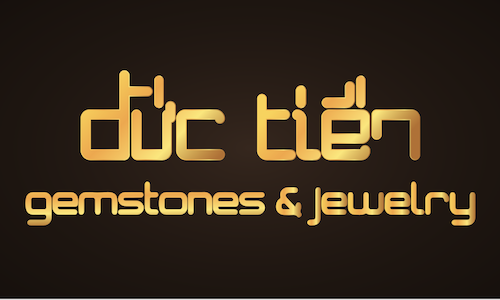History of Vietnamese jeweler profession
From 5,000 BC, humans discovered gold and used it. The Egyptians first discovered gold in the upper Nile, this precious metal contributed to the beauty of ancient Egyptian civilization. In the evolution of mankind, that dazzling brilliant golden color is joy, a source of hope for many people.
The process of formation and development of Vietnam gold and silver craft villages
In our country, the jewelry craft has existed for thousands of years, has become a traditional profession along with many other handicrafts, many famous jewelry craft villages since the ancient Vietnamese period up to now.
1. Chau Khe Silver and Gold Craft Village (Hai Duong)
Up to now, Chau Khe gold and silver craft village, in Thuc Khang commune, Giang Binh district, Hai Duong province has a history of more than 500 years, originating from Luu Xuan Tin, a senior minister of the Le Dynasty. Thanh Ton (1460-1497) has started to build the village of silver casting.
As a chief minister, but Mr. Luu Xuan Tin was very trusted by the Le court, assigned the task of setting up a silver casting workshop in Thang Long city because at that time, silver was the substitute currency in all economic activities, trade and exchange of the society. Privileged by the court, Luu Xuan Tin gave his villagers a priority to go to Thang Long to set up a silver casting workshop in Dong Cac ward. Gradually, from silver casting, Chau Khe workers have developed to make gold jewelry (also known as jewelry). Since then, the profession of making gold and silver Chau Khe became famous not only in Hai Duong but also spread to Hanoi, which is famous as Hang Bac street, concentrating a lot of gold and silver craftsmen from this village.
Not the first person to find out the technique of producing jewelry, but the Chau Khe people have great merit in combining skillfully between hands, the creativity of intelligence, their own secrets with the technique. making traditional gold to produce the most complete products. They not only bring the users magnificent and luxurious jewelry, but also contribute to the maintenance of their father’s traditional craft village and the development of the jewelery profession in our country. In particular, in the past 100 years, Chau Khe craft village has reached its peak in terms of production technique, quality and quantity of gold and silver products nationwide.
2. Dong Xam silver carving village (Thai Binh)
Dong Xam silver carving village in Hong Thai commune, Kien Xuong district, Thai Binh province, has long been famous everywhere, the products of the craft village are not only present in many provinces in the country but also known by foreign visitors. the sophistication of unique items. This traditional profession is the pride of the people here because it attracts a sizable workforce, up to 1,500 people and provides stable income for workers.
Silver carving team is Nguyen Kim Lau, he lived around the beginning of the seventeenth century, who worked as gold and silver in Chau Bao Long (present day Cao Bang). Later, he went to Kien Xuong (Thai Binh) to set up 12 wards to transmit the craft. The craft wards that day are Dong Xam silver carving.
Admiring his skill and reputation, Cao Dinh Huong, the chief minister at that time (under Gia Long), Tran Minh, together with his wife, Huynh Thi Ngoc, invited him to the palace to teach jewelry for his three sons: Tran Hoa, Tran Dien, Tran Dien and three grandchildren: Huynh Quang, Huynh Bao, and Huynh Nhat have spent 11 years. In 1821, Mr. Cao Dinh Huong passed away. Before his death, his ultimate enthusiasm was the desire for his students to bring the jewelry profession to spread among the folk.
According to the teacher’s will, three brothers, Tran Hoa, Tran Dien, and Tran Dien, went to Thang Long (Hanoi) to open the furnace to accept disciples. As for the Huynh brothers, they followed the line of founders and moved to the South. When coming to Phan Thiet, they stopped by and accepted a vocational disciple and commemorated one of his brothers who passed away here. The jeweler profession in Phan Thiet was born since then.
In the South, the jewelery profession at that time was not yet widely popular. According to the teacher’s wish, from Thang Long, the Tran cousins began their journey down the South. Their stopover is Gia Dinh – Cho Lon.
The merits of the golden ancestors not only always remembered them, but also received many royal ordinances, especially during the Nguyen Dynasty. Currently, at Kim Hoan Church in Hue and Le Chau Hoi Quan (Ho Chi Minh City) still retain many dignified identities of the Nguyen Dynasty. That is the rank function “Doctor of gold mining”.
The place where silversmiths’ skills gather together to promote the traditional profession is called “Le Chau Hoi So”, then renamed “Le Chau Hoi Quan” until now.

The jewelry worshiping ceremony at Le Chau Hoi Quan

Le Chau Hoi Quan
3. Center
- Founding Council of Kim Hoan Fine Arts Career Education Center
| Họ và tên | Chức vụ |
| 1. Ông Nguyễn Văn Dưng
2. Ông Trần Văn Tư 3. Ông Lưu Ngọc Phi 4. Ông Võ Kim Seng 5. Ông Phạm Văn Tám 6. Ông Nguyễn Tấn Kiệt 7. Ông Đoàn Thế Lập 8. Ông Võ Văn Khách 9. Ông Nguyễn Tu Mi 10. Ông Trần Hải 11. Ông Vũ Công Đức 12. Ông Nguyễn Minh Còn 13. Ông Nguyễn Ngọc Đê 14. Ông Nguyễn Văn Thình 15. Ông Trà Văn Tâm 16. Ông Mai Văn Có 17. Ông Nguyễn Thành Chung 18. Ông Nguyễn Tấn Hùng 19. Ông Phạm Văn Trọng |
Chủ tịch Hội Đồng
Thành viên Hội Đồng Thành viên Hội Đồng Thành viên Hội Đồng Thành viên Hội Đồng Thành viên Hội Đồng Thành viên Hội Đồng Thành viên Hội Đồng Thành viên Hội Đồng Thành viên Hội Đồng Thành viên Hội Đồng Thành viên Hội Đồng Thành viên Hội Đồng Thành viên Hội Đồng Thành viên Hội Đồng Thành viên Hội Đồng Thành viên Hội Đồng Thành viên Hội Đồng Thành viên Hội Đồng |
- Executive Committee of Ho Chi Minh City Jewelry Association
| Họ và tên | Chức vụ |
| 1. Ông Nguyễn Văn Dưng
2. Ông Lê Hữu Hạnh 3. Ông Nguyễn Tu Mi 4. Ông Phạm Văn Tám 5. Bà Bùi Thị Thúy Nga 6. Ông Nguyễn Chí Nhân 7. Ông Đỗ Thanh Danh 8. Ông Bùi Quang Tuấn 9. Ông Võ Trường Sơn 10. Ông Nguyễn Tấn Kiệt 11. Ông Hồ Thanh Tuấn 12. Ông Trần Hải 13. Ông Nguyễn Văn Trinh 14. Ông Ngô Thành Long 15. Ông Trần Văn Trung 16. Ông Nguyễn Văn Tiên 17. Ông Trần Văn Dân 18. Ông Trần Công 19. Ông Huỳnh Tuấn Kiệt 20. Ông Nguyễn Lâm Vinh Huy 21. Ông Huỳnh Kim Phúc 22. Ông Đặng Ngọc Quý 23. Bà Lê Thị Kim Gương 24. Ông Vương Hớn Chương 25. Ông Đặng Thanh Sơn 26. Ông Võ Công Đởm 27. Ông Nguyễn Văn Nguyên 28. Bà Đoàn Hồng Ngọc 29. Bà Nguyễn Thị Bảo Ngọc 30. Ông Ngô Ngọc Tuấn 31. Ông Nguyễn Ngọc Hiệp 32. Ông Nguyễn Hoàng Việt 33. Bà Đoàn Thị Anh Vũ |
Chủ Tịch Hội
Phó Chủ Tịch Hội Phó Chủ Tịch Hội Phó Chủ Tịch Hội Phó Chủ Tịch Hội Ủy Viên Thường Vụ Ủy Viên Thường Vụ Ủy Viên Thường Vụ Ủy Viên Thường Vụ Ủy Viên Thường Vụ Ủy Viên Thường Vụ Ủy Viên Thường Vụ Ủy Viên Thường Vụ Ủy Viên Ban Chấp Hành Ủy Viên Ban Chấp Hành Ủy Viên Ban Chấp Hành Ủy Viên Ban Chấp Hành Ủy Viên Ban Chấp Hành Ủy Viên Ban Chấp Hành Ủy Viên Ban Chấp Hành Ủy Viên Ban Chấp Hành Ủy Viên Ban Chấp Hành Ủy Viên Ban Chấp Hành Ủy Viên Ban Chấp Hành Ủy Viên Ban Chấp Hành Ủy Viên Ban Chấp Hành Ủy Viên Ban Chấp Hành Ủy Viên Ban Chấp Hành Ủy Viên Ban Chấp Hành Ủy Viên Ban Chấp Hành Ủy Viên Ban Chấp Hành Ủy Viên Ban Chấp Hành Ủy Viên Ban Chấp Hành |
- Board of Directors, Center for Vocational Education and Arts Kim Hoan
| Họ và tên | Chức vụ |
| 1. Bà Lê Thị Kim Gương
2. Ông Phạm Bá Nhuận |
Giám Đốc
Phó Giám Đốc |
- Staff and teachers
| 1. NNƯT Gian Tô Hà
2. NNƯT Huỳnh Kim Phúc 3. NNKH Phạm Bá Nhuận 4. NNKH Nguyễn Xuân Việt 5. NNKH Nguyễn Đình Tuyến 6. Nghệ Nhân – Tiến Sĩ Đoàn Thị Anh Vũ 7. Thạc Sĩ Võ Trường Sơn 8. Thạc sĩ Nguyễn Văn Hải 9. Thầy Nguyễn Ngọc Khanh 10. Thầy Hoàng Khải Sơn 11. Thầy Nguyễn Văn Trung 12. Thầy Nguyễn Trí Trung 13. Thầy Trang Thanh Phước 14. Thầy Lưu Đình Ngọc Long 15. Thầy Hồ Trọng Thảo 16. Thầy Nguyễn Huy Hoàng 17. Thầy Trương Huỳnh Huy 18. Thầy Huỳnh Công Toàn 19. Thầy Trần Thanh Nhã 20. Cô Mai Thị Phương Hiếu 21. Cô Lê Kim Ngân 22. Cô Phạm Hồng Kỳ Trúc 23. Cô Võ Huỳnh Vân Anh 24. Cô Nguyễn Thị Bích Lâm 25. Cô Nguyễn Đinh Thị Hoài Như 26. Cô Huỳnh Kim Thủy Trúc |
- Central departments
| 1. Ban Giám Đốc
2. Phòng Đào Tạo 3. Phòng Tổ Chức – Hành Chính – Kế Toán 4. Phòng Tuyển sinh – Thông tin – Truyền Thông |









